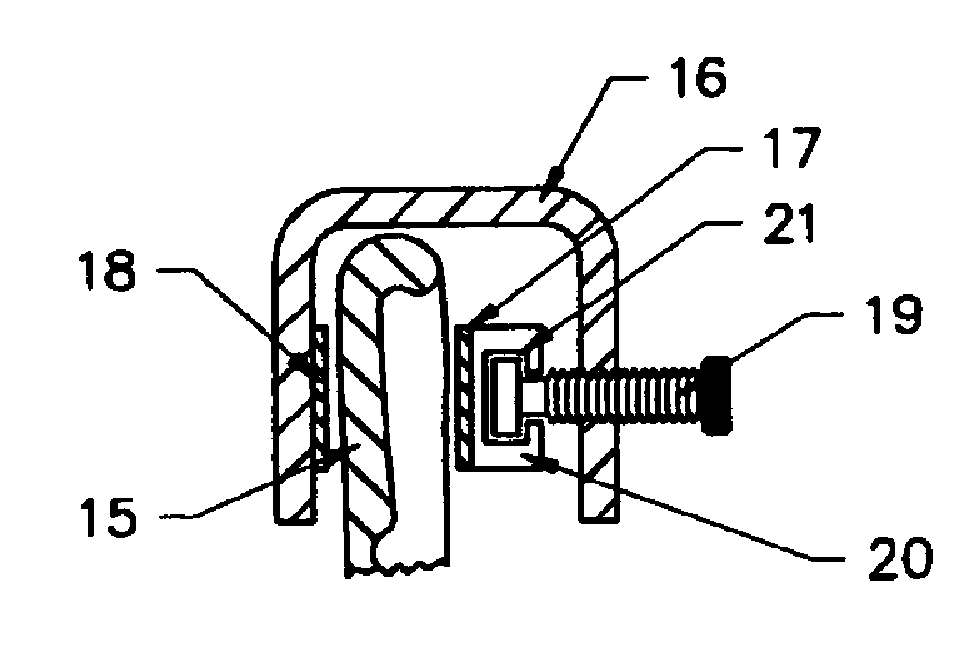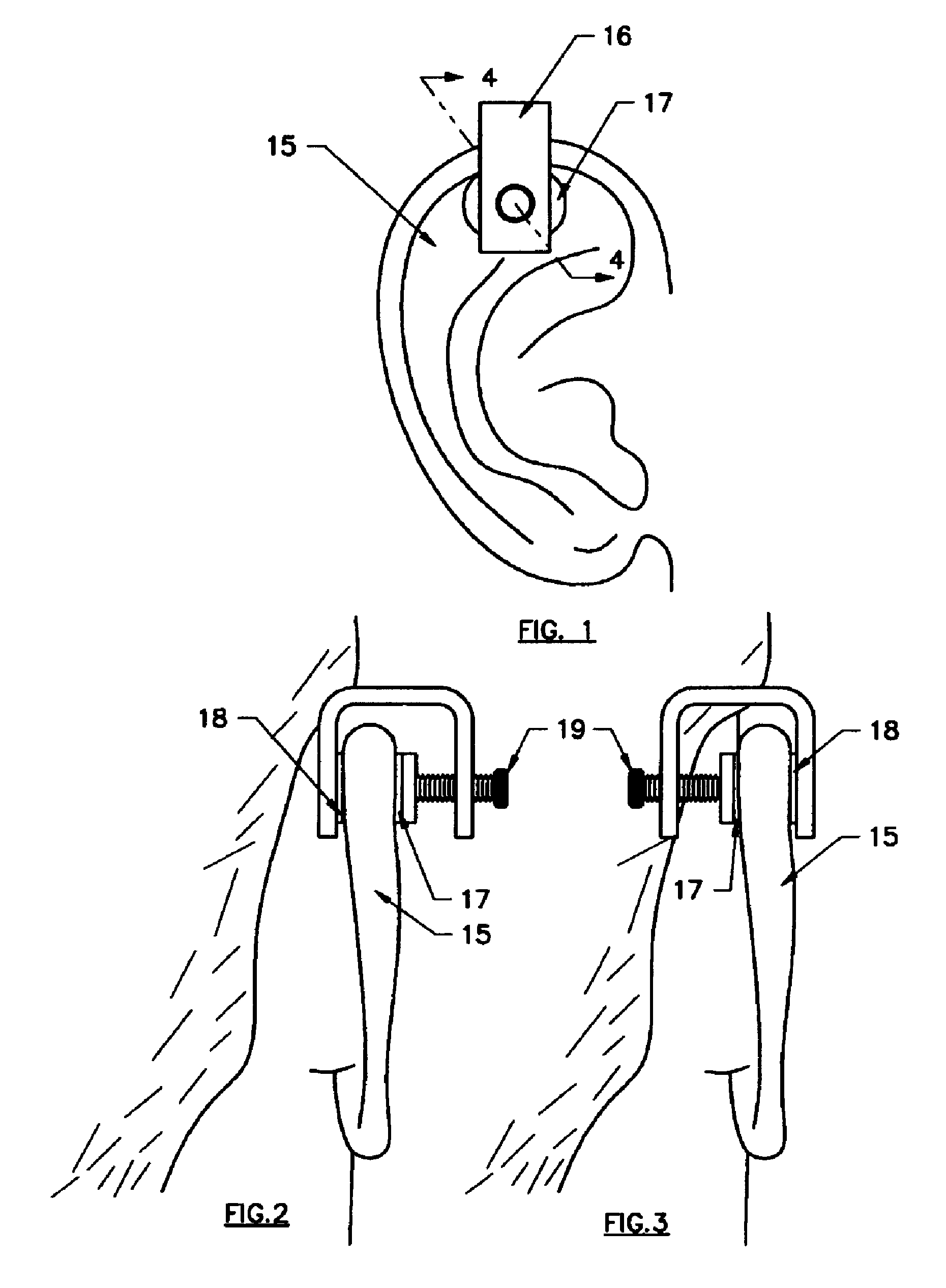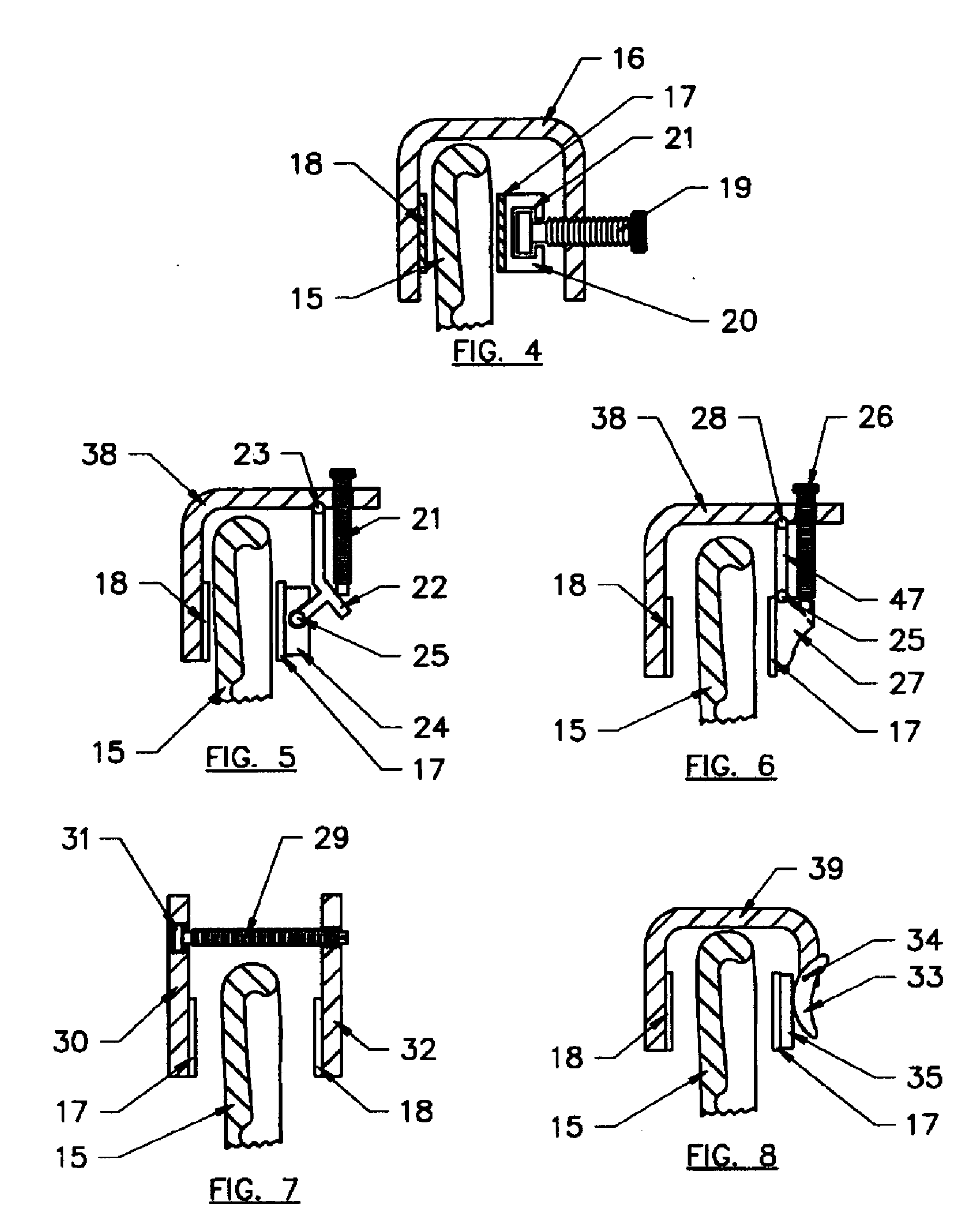Device and Method for Treating Ear Injuries
a technology for ear injuries and ear canals, applied in the field of ear injuries, can solve the problems of inconvenient use, inconvenient use, and inconvenient use of devices such as these, and achieve the effect of decreasing fluid and increasing inflammation
- Summary
- Abstract
- Description
- Claims
- Application Information
AI Technical Summary
Benefits of technology
Problems solved by technology
Method used
Image
Examples
Embodiment Construction
[0032]While this invention is susceptible of embodiments in many different forms, there are shown in the drawings, and will be described herein in detail, specific embodiments thereof with the understanding that the present disclosure is to be considered as an exemplification of the principles of the invention and is not intended to limit the invention to the specific embodiments illustrated.
[0033]FIG. 1 shows a side view of the pinna 15 or outer ear with a structure 16 of one embodiment of the invention utilizing one example of a screw thread pressure applying mechanism. Pad 17 is shown on the outside surface of the pinna 15 in relative position depending on specific location of the hematoma and to assure adequate compression of the underlying tissues of the perichondrium.
[0034]FIG. 2 is a rear view of FIG. 1 with the screw thread pressure applying device located on the outer (away from the head) side of the pinna 15. As the screw thread 19 is adjusted so as to reduce the space bet...
PUM
 Login to View More
Login to View More Abstract
Description
Claims
Application Information
 Login to View More
Login to View More - R&D
- Intellectual Property
- Life Sciences
- Materials
- Tech Scout
- Unparalleled Data Quality
- Higher Quality Content
- 60% Fewer Hallucinations
Browse by: Latest US Patents, China's latest patents, Technical Efficacy Thesaurus, Application Domain, Technology Topic, Popular Technical Reports.
© 2025 PatSnap. All rights reserved.Legal|Privacy policy|Modern Slavery Act Transparency Statement|Sitemap|About US| Contact US: help@patsnap.com



